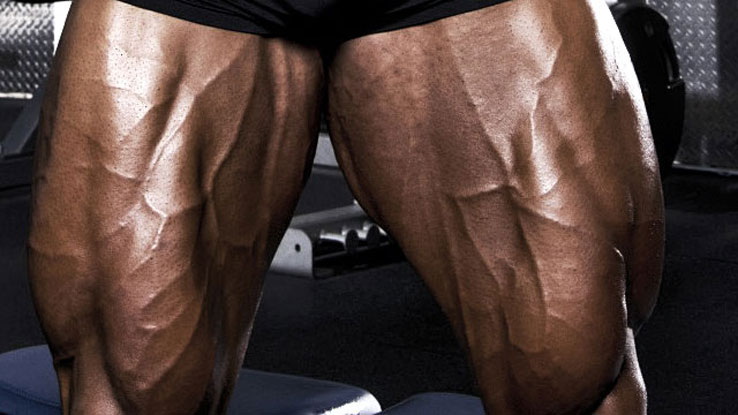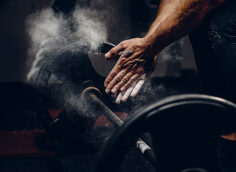I have a pretty sweet job. I get to hang out and coach athletes of varying ages and ability levels every single day. I tell them to lift heavy things and I get to wear sweatpants while doing it. Suffice it to say, life doesn't suck.
Likewise, I have the luxury of working alongside one of the best coaching staffs in the country. On a daily basis we're exchanging ideas, challenging one another to get better, and wondering why the hell Eric Cressey has such an obsession with Linkin Park.
Musical preferences aside (Tony's Techno Thursday is a favorite of mine), anything that happens within the confines of Cressey Performance as it pertains to making our athletes bigger, faster, and/or stronger, with rare exceptions, is pretty much par for the course.
We're all on the same page as far as assessing and programming is concerned. There might be a unique circumstance where someone walks in with an extensive injury history and needs a little more attention to detail, but as far as training athletes is concerned, we're always hammering home things like the importance of soft tissue quality, squatting and deadlifting with good technique, and placing a priority on single-leg work, core stability, and conditioning.
That said, in many ways the gym floor at CP serves as a pseudo testing ground for us to stroke our evil strength coach beards and test-drive certain ideas or protocols to see what works and what's a complete wash.
Recently fellow coach Greg Robins and I have been toying around with paused squats and we've come to the conclusion that they can build legs the size of Kansas while making you absolutely hate life.
In other words, they're perfect for the T Nation crowd!
The idea certainly isn't new or revolutionary as coach Chad Wesley Smith has written on these before. Still, I wanted to expand on the topic and give a brief explanation as to why paused squats might be a welcomed change of pace for many trainees, as well as showcase how you can go about implementing them into your own program.
I've never written about something I've never tried myself, and if it's any consolation paused squats are arguably one of the hardest things I've ever done.
While I won't sit here and say paused squats are going to make you bulletproof, increase your 1RM by 100 pounds, solve global warming, or cure that raging case of bed head you're rocking, I will say they offer a throng of other benefits:
- The obvious advantage is the increased time under tension (TUT), which, alongside the total load being (progressively) lifted, is a huge factor in muscular hypertrophy.
- Maybe more importantly – at least in my eyes – is the confidence one gains staying in the "hole" longer. It's no secret that many trainees have the spinal integrity of a wet noodle in the very bottom position of the squat, so spending more time training in that zone pays huge dividends in the long run.
- Moreover, depending on the time spent in the paused position, we take away varying amounts of our ability to use the stretch-shortening cycle (our body's ability to use elasticity to its advantage and "bounce" back up), which helps increase starting strength.
- And while I can't back it up with science, it's a well known fact that for every set of paused squats you perform, a woman buys a pair of see-through lululemon yoga pants.
I could keep it simple and just say pick a "conservative" weight, perform 3-5 reps for 3-5 second holds each and adjust from there, adding 5-10 pounds each week for three weeks.
It's not a horrible place to start, but it's way too vague.
Instead, I prefer to look at the percentage of one's 1RM and work off of that.
| # Repetitions | % 1RM | # Repetitions | % 1RM | # Repetitions | % 1RM |
|---|---|---|---|---|---|
| 1 | 100 | 5 | 87.5 | 9 | 77.5 |
| 2 | 95 | 6 | 85 | 10 | 75 |
| 3 | 92.5 | 7 | 82.5 | 12 | 70 |
| 4 | 90 | 8 | 80 | 15 | 60 |
Let's say the goal is to work at 65% of your 1RM. This is a bit of an aggressive starting point, but using the chart above we can see that the target rep range would be 12-15 reps.
Let's then divide that by the pause time, which, for shits and giggles, we'll set at three seconds. We get 4-5 reps.
So, the goal would be to perform 3-4 sets of 4-5 reps with a three-second pause at the bottom.
Again while it's a place to start, it still has a little too much of a "shooting from the hip" vibe to it.
A preferred approach would be to use the same time frame (paused three-second holds) and start with a lower percentage and work your way up on a week-to-week basis.
A sample 9-week cycle may look like this:
Current Conventional 1RM = 350 pounds
- Weeks 1-3: 3 x 8 (3 second pause) working in the 40-50% range
- Week 1: 40% (140 pounds)
- Week 2: 45% (160 pounds)
- Week 3: 50% (175 pounds)
- Weeks 4-6: 3 x 5 (3 second pause) working in the 50-60% range
- Week 4: 50% (175 pounds)
- Week 5: 55% (190 pounds)
- Week 6: 60% (210 pounds)
- Weeks 7-9: 3 x 3 (3 second pause) working in the 60-70% range
- Week 7: 60% (210 pounds)
- Week 8: 65% (230 pounds)
- Week 9: 70% (245 pounds)
- Don't be a hero. Trust me when I say to start with the lower percentages and work your way up.
- Ideally you'll want someone to time your pauses for you. This works well for those with a training partner: have him (or her) hold a stopwatch in their hand and start the timer once you get into the bottom position.
- When they say up, try to be as explosive out of the hole as possible. In the worst case you can count the seconds in your head, but it's important that you're honest with yourself and not count too quickly.
- I'm not married to one specific squat variation here. Back squats are well suited, but if you really want to up the ante go with front squats.
- I'd reserve these for earlier in the week when you're most fresh. I'd perform your paused sets as the first exercise on Monday, and maybe follow those up with some rep work on the deadlift.
- Keep a puke bucket handy (or take note of where the nearest exit outside is), cause you're probably going to need it.
Building a manly set of quads and hamstrings doesn't require complex programming or the latest (or oldest) Soviet "secretz."
All it takes is basic exercises, heavy weights, and some classic mass building techniques that have stood the test of time. And a cast iron set of balls and man-sized ralphing pail never hurt either.





